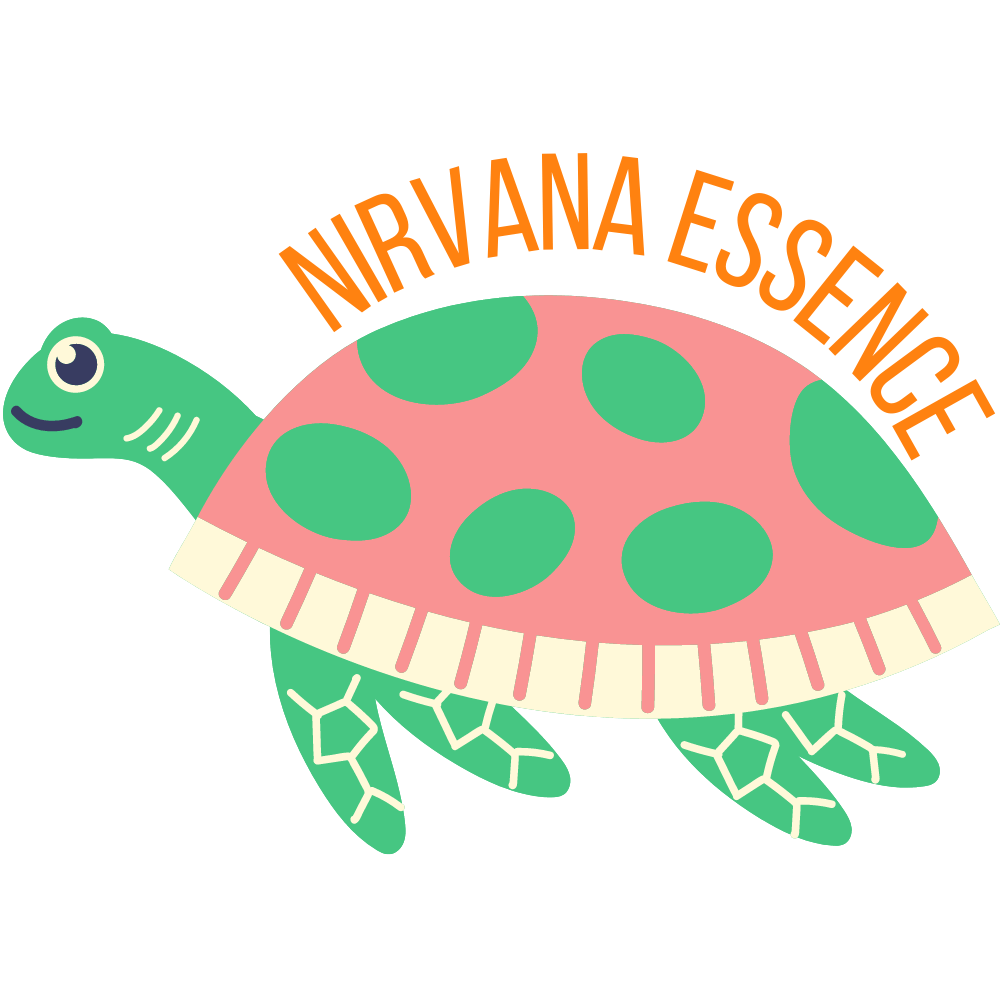Introduction to Yin Yoga
Yin Yoga, a unique style of yoga, has been gaining popularity for its meditative and restorative qualities. Unlike the dynamic flow of Vinyasa or the strength-building postures of Hatha Yoga, Yin Yoga focuses on holding poses for a longer period, allowing practitioners to delve into stillness and connect deeply with their body and mind.
Originating from Taoist yoga traditions, Yin Yoga embodies the principle of Yin and Yang, the two opposing yet complementary forces in Chinese medicine. While Yang Yoga styles like Vinyasa focus on the muscular (Yang) tissues, Yin Yoga targets the Yin tissues – ligaments, tendons, fascia, and other deep connective tissues. This practice allows for a complete yoga experience, bringing the body back into balance.
Understanding Yin Yoga Practice
A typical Yin Yoga class is a meditative practice that encourages stillness and inner peace. The poses are held for a longer period of time, usually between three to five minutes, sometimes even longer. This approach to yoga is the perfect complement to more active Yang styles, promoting flexibility and a range of motion in a unique way.
The use of props is common in Yin Yoga. Blocks, bolsters, and even a yoga mat can be used to support the body in poses, making the practice accessible to people of all levels. The role of a yoga teacher in a Yin class is to guide students safely into and out of poses, ensuring that each student’s body is respected and cared for.
Yin Yoga 101: Everything You Need to Know
Yin Yoga is a slow-paced style of yoga where poses, or asanas, are held for extended periods. This form of yoga is designed to apply moderate stress to the connective tissues – the tendons, fascia, and ligaments – with the aim of increasing circulation in the joints and improving flexibility. It’s a practice that’s more meditative in nature, allowing practitioners to cultivate inner silence and awareness.
In Yin Yoga, each pose is an opportunity to explore your body’s unique range of motion and learn to listen to its signals. The practice of holding poses for a longer period of time can be challenging, but it’s also an opportunity to practice mindfulness and patience.
Exploring Yin Yoga Poses
Yin Yoga poses, or asanas, are typically held for three to five minutes, sometimes even longer. This practice allows the body to slowly sink into the pose and helps target the deeper connective tissues in our body, including the fascia, ligaments, joints, and bones.
Yin Yoga poses, also known as asanas, are unique in their approach. Unlike other forms of yoga where poses are held for a few breaths, in Yin Yoga, poses are held for an extended period, typically ranging from three to five minutes, and sometimes even longer. This practice allows the body to gradually settle into the pose, targeting the deeper connective tissues, including the fascia, ligaments, joints, and bones.
Here are some additional details about these poses:
Butterfly

This pose involves a forward fold with the soles of the feet together. It’s a great pose for opening the hips and stretching the lower back. It also targets the kidney and bladder meridians, which according to Chinese medicine, can help with digestion and stress relief.
Dragon
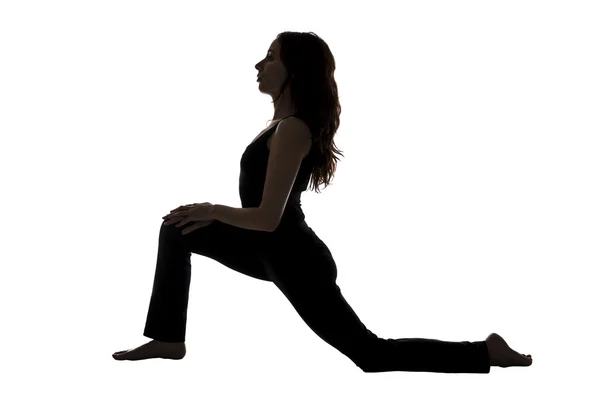
This is a deep lunge pose that can be modified with props for comfort. It targets the hip flexors and quadriceps, enhancing hip mobility and alleviating back tension. It’s a great pose for those who spend a lot of time sitting.
Sphinx
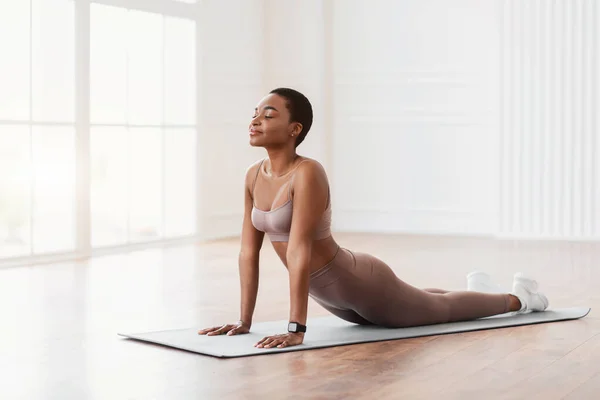
This is a gentle backbend pose where you lie on your stomach and prop your upper body on your elbows. It targets the spine, chest, and lungs, promoting better posture and opening the chest for better breathing.
Shoelace
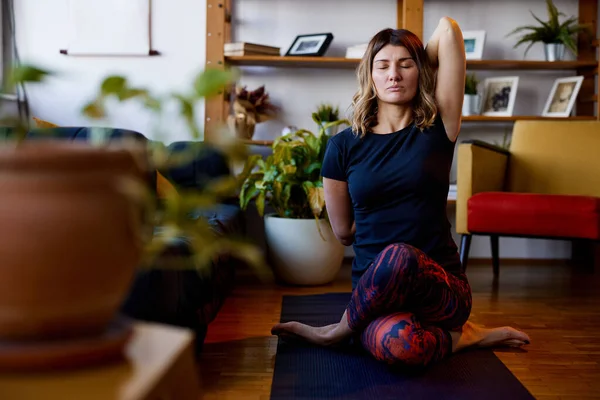
Also known as Gomukhasana in Sanskrit, this pose involves sitting with one knee stacked over the other and can be quite challenging for those with tight hips. It targets the hips, IT band, and spine, improving hip flexibility and releasing tension in the spine.
| Pose | Description | Target Areas | Benefits |
|---|---|---|---|
| Butterfly (Baddha Konasana A) | A beginner-level pose with low intensity. It involves the contraction of various muscles including the erector spinae muscle group, semispinalis, and splenius among others. | Kidney and bladder meridians | Aids digestion, relieves stress |
| Sphinx (Salamba Bhujangasana) | A beginner-level pose with low intensity. It involves the contraction of various muscles including the erector spinae muscle group, semispinalis, and splenius among others. | Spine, chest, lungs | Promotes better posture, opens the chest for better breathing |
| Dragon | A deep lunge pose that can be modified with props for comfort. | Hip flexors, quadriceps | Enhances hip mobility, alleviates back tension |
| Shoelace (Gomukhasana) | An intermediate-level pose with medium intensity. It involves the contraction of various muscles including the erector spinae muscle group, semispinalis, and multifidus among others. | Hips, IT band, spine | Improves hip flexibility, releases tension in the spine |
Please note that it’s always best to learn these poses under the guidance of a certified yoga instructor, especially if you’re a beginner or have any health concerns.
Remember, the key to practicing Yin Yoga is patience and listening to your body. Use props as needed and always respect your body’s limits.
Restorative Aspects of Yin Yoga
Yin Yoga is often described as a relaxing and restorative type of yoga. Unlike Vinyasa Yoga, which focuses on dynamic flow and movement, Yin Yoga involves holding poses for extended periods, typically for three to five minutes. This practice allows for a deep stretch that reaches the connective tissues of the body, promoting flexibility and improved circulation.
While both Yin Yoga and Restorative Yoga share the common goal of relaxation and stress relief, they differ in their approach. Restorative Yoga uses props to support the body in poses, allowing for complete relaxation and release. On the other hand, Yin Yoga encourages gentle stress on the tissues, leading to their strengthening and increased flexibility.
The long-held poses in Yin Yoga also promote a meditative state. The practice encourages mindfulness as practitioners maintain poses, focusing on their breath and the sensations in their bodies. This meditative aspect of Yin Yoga helps to calm the mind and reduce stress and anxiety.
Benefits of Yin Yoga
Yin Yoga offers numerous benefits that encompass physical, mental, and emotional aspects. Physically, the practice of Yin Yoga improves flexibility and posture. The long holds in Yin poses allow the muscles to relax and the deeper connective tissues to be gently stretched and strengthened. This can lead to improved joint mobility and overall body flexibility.
Mentally, Yin Yoga promotes mindfulness and stress relief. The meditative nature of the practice helps practitioners to stay present and focused, reducing distractions and promoting a sense of peace and calm. This can be particularly beneficial for those dealing with stress or anxiety.
Emotionally, Yin Yoga encourages self-awareness and emotional balance. By focusing inward during the practice, individuals can become more aware of their emotional state and work towards achieving balance and harmony.
| Benefits of Yin Yoga | Description | Supporting Studies |
|---|---|---|
| Improved Flexibility and Joint Mobility | Yin Yoga involves holding poses for extended periods, which can help stretch both the muscles and the connective tissues. This can lead to improved flexibility and joint mobility. | “Effects of Hatha Yoga on Flexibility and Motor Ability” – International Journal of Yoga |
| Stress Reduction | Yoga practices, including Yin Yoga, often incorporate mindfulness and deep breathing, which can help reduce stress and anxiety. | “Yoga for Anxiety: A Systematic Review of the Research Evidence” – Journal of Clinical Psychology |
| Improved Emotional Well-being | Yoga can help improve emotional well-being by promoting mindfulness and self-awareness. | “Yoga as a Complementary Treatment of Depression” – Journal of Psychiatric Practice |
| Improved Cardiovascular Health | Some research suggests that yoga can help improve cardiovascular health by reducing risk factors like high blood pressure and cholesterol. | “Yoga and Cardiovascular Disease Risk Factors: A Systematic Review” – European Journal of Preventive Cardiology |
| Pain Management | Yoga has been used as a method for pain management for various conditions, including arthritis and chronic back pain. | “Yoga for Arthritis: A Scoping Review” – Journal of Physical Activity and Health |
Yin Yoga Sequence for Beginners
Starting a Yin Yoga practice can be simple and accessible for beginners. Here is a step-by-step guide to a basic Yin Yoga sequence:
- Butterfly Pose: Sit with your soles together and let your knees fall out to the sides. Hold for 3-5 minutes.
- Dragon Pose: Step into a lunge position, with your right foot forward. Keep your hands on the floor or on blocks for support. Hold for 3-5 minutes, then switch sides.
- Sphinx Pose: Lie on your stomach and prop yourself up on your elbows, keeping your hips and legs relaxed. Hold for 3-5 minutes.
- Shoelace Pose: Sit and cross your legs, stacking one knee on top of the other. Hold for 3-5 minutes, then switch sides.
Remember to breathe deeply and steadily throughout each pose. Listen to your body and adapt the poses to your own level. Use props as needed to support your body and make the poses more comfortable.
Yin Yoga is the perfect practice for those looking to improve flexibility, reduce stress, and cultivate a sense of inner peace. Whether you’re a seasoned yogi or a beginner, incorporating a regular Yin practice into your routine can offer profound benefits. Remember, the key to Yin Yoga is patience and acceptance – so take your time, listen to your body, and enjoy the journey.
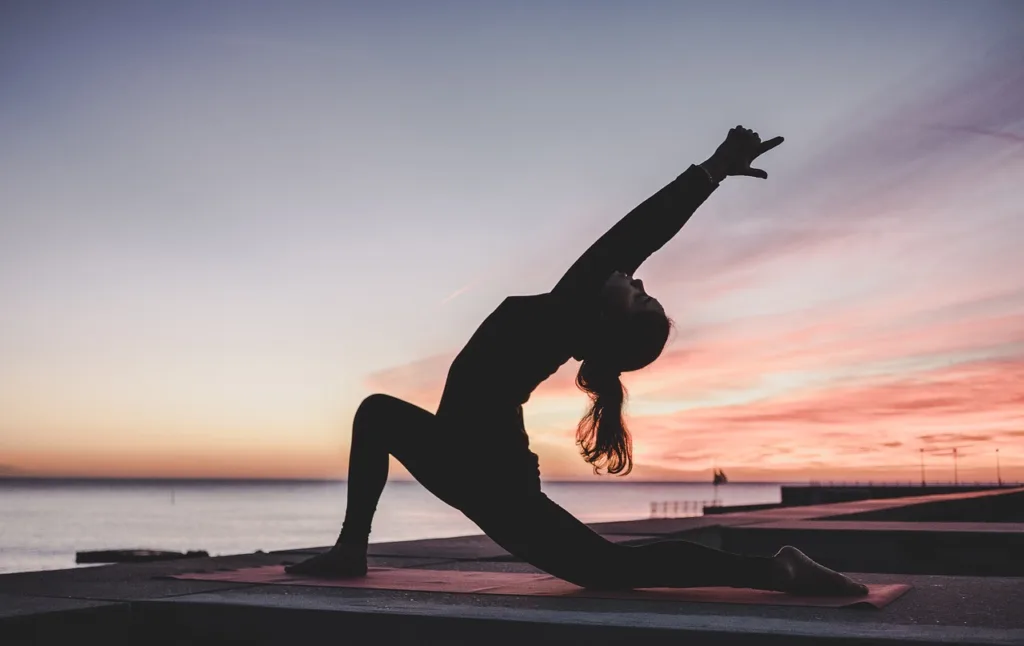
Conclusion: Why Choose Yin Yoga ?
In the fast-paced world we live in, Yin Yoga offers a refreshing opportunity to slow down and connect with our body and spirit. This unique style of yoga, with its long-held asanas and meditative approach, provides a balance to the active and often stressful aspects of our lives.
Yin Yoga is more than just a series of yoga postures. It’s a complete practice that targets the deep connective tissues in our body, promoting flexibility and enhancing our range of motion. The long-held Yin postures allow us to explore the different areas of our body, understanding our unique qualities and limitations.
One of the key aspects of Yin Yoga is its emphasis on stillness and mindfulness. Holding a Yin asana for several minutes provides an opportunity to cultivate mindfulness, making it a form of meditative yoga. This approach to yoga aims to harmonize the body and spirit, promoting relaxation and mental well-being. For more resources, check out – Yoga Journal & Yin Yoga
If you’re looking for a way to unwind, relieve stress, and deepen your yoga practice, Yin Yoga may be the perfect fit for you. It’s a relaxing yoga style that’s suitable for all levels, from beginners to seasoned practitioners. So why not give it a try? Join a Yin Yoga class and experience the benefits firsthand.
In conclusion, Yin Yoga is more than just a style of yoga; it’s a pathway to understanding and connecting with your body, cultivating mindfulness, and promoting overall well-being. Whether you’re a yoga enthusiast looking to deepen your practice or a beginner exploring different styles, Yin Yoga has something to offer. So roll out your yoga mat and embark on your Yin Yoga journey today.
FAQs
Is Yin Yoga good for beginners?
Absolutely! Yin Yoga is a gentle and meditative style of yoga that is suitable for beginners. It’s a great way to start your yoga journey as it allows you to take your time in each pose and really connect with your body. Plus, the use of props can make the asanas more accessible.
What makes Yin Yoga different than traditional yoga?
Yin Yoga is unique in its approach to flexibility and relaxation. Unlike traditional yoga styles that focus on dynamic movements and strengthening the muscles, Yin Yoga targets the deeper connective tissues in the body. The poses are held for a longer period, which can range from a few minutes to as long as twenty minutes. This approach allows for a deeper stretch and a more meditative practice.
What are the 3 principles of Yin Yoga?
The three principles of Yin Yoga are:
- Come into the pose to an appropriate depth: Respect your body’s individuality and only go as far as feels right for you.
- Resolve to remain still: Once you’re in the pose, stay still without fidgeting or shifting.
- Hold the pose for a while: Yin poses are typically held for three to five minutes, allowing the body to slowly release and go deeper.
Is Yin Yoga difficult?
Yin Yoga can be challenging, but not in the way that a Vinyasa or Ashtanga class might be. The challenge in Yin Yoga comes from holding poses for a longer period and staying still. It’s more of a mental challenge than a physical one.
Who is Yin Yoga ideal for?
Yin Yoga is ideal for anyone looking to slow down and deepen their yoga practice. It’s great for those who want to improve flexibility, promote relaxation, and cultivate mindfulness. It’s also a good complement to more active yoga styles and other forms of exercise.
What is the best yoga style for beginners?
There’s no one-size-fits-all answer to this as the best yoga style for beginners depends on individual preferences. However, Yin Yoga, Hatha Yoga, and Restorative Yoga are often recommended for beginners due to their slower pace and emphasis on the basics.
Why is Yin Yoga unique?
Yin Yoga is unique in its slow, meditative approach. It’s one of the few yoga styles that encourages passive stretching, with poses held for several minutes. This allows practitioners to work on the deeper connective tissues and promotes mental and emotional well-being.

